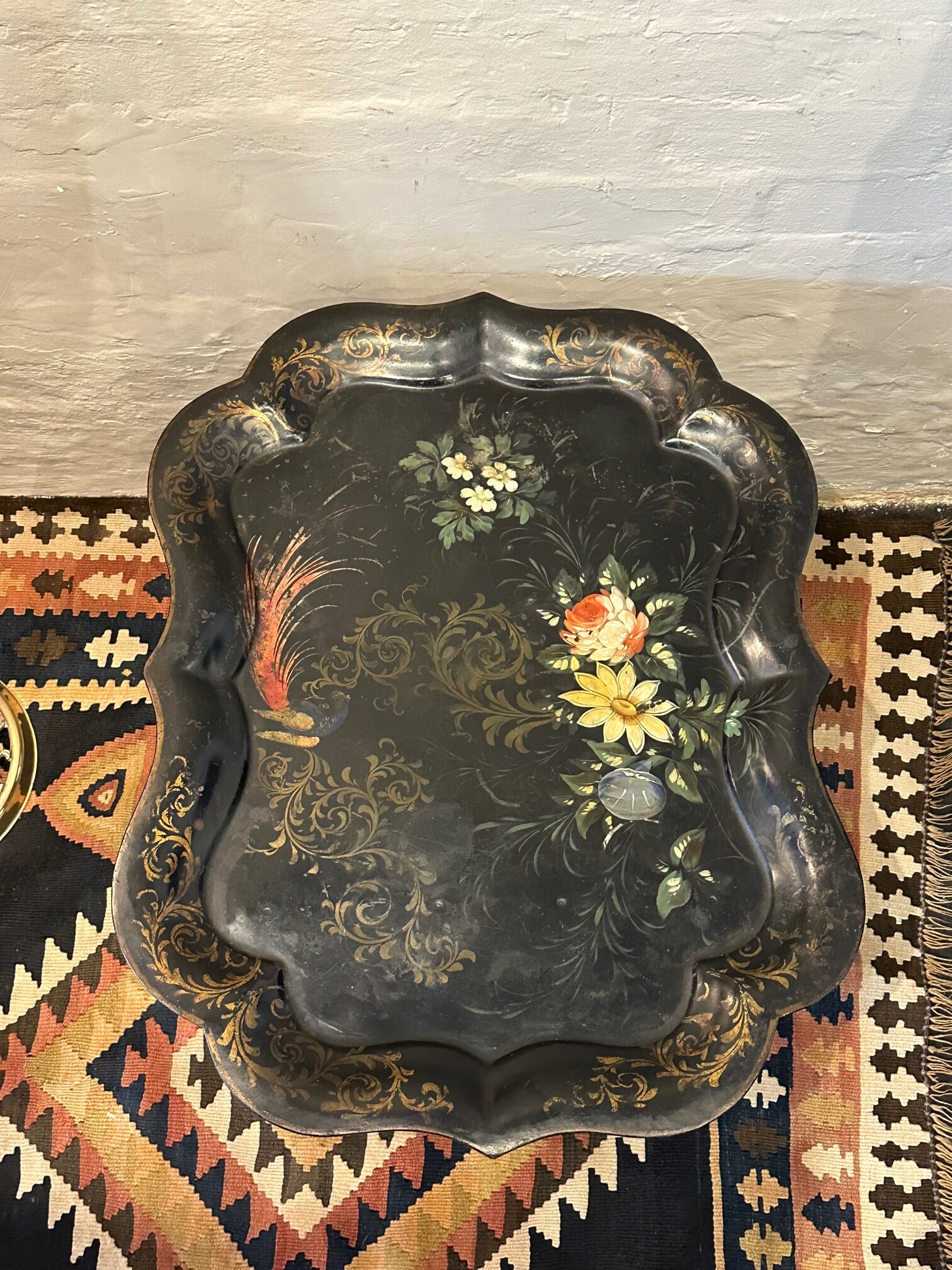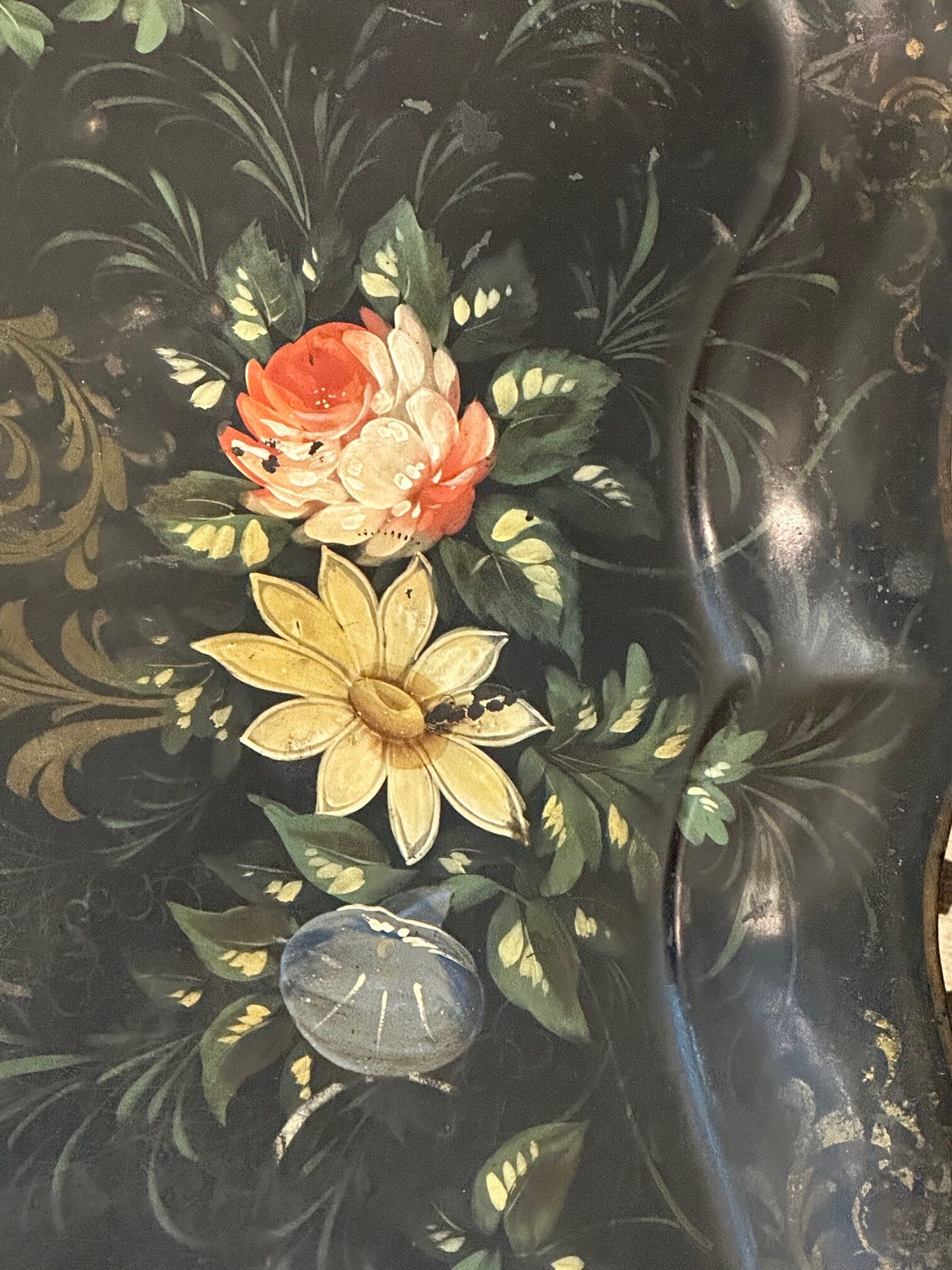Description
Trays in one form or another have been around since ancient times, but metal trays did not really become widely available until the middle of the 18th century, when the popularity of tea drinking made the substantial metal tray a very useful household accessory. For wealthier families, these trays were often silver, but for more middle-income homes, they were more often tin that had been painted.
This is not to say that more upscale houses did not have these trays, because they did, and fashionable designs for their decoration were created by such famous designers as Thomas Chippendale, George Hepplewhite and Robert Adam. Usually, these tin trays have a black coating made from asphaltum, which is a blackish-brown mixture made from bitumens. Then this surface was hand painted with colorful representations of flowers, birds, fruit and, on rarer occasion, landscapes.
In the mid-19th century, when stenciling became popular, many of these trays were given stenciled designs, but these are not nearly as popular with current collectors as the hand-painted examples. American and British tin trays were usually oval or oblong (rectangular with rounded corners) and sometimes they had rolled rims, as the one belonging to B.N. does, or pierced handholds at opposite ends.
These trays saw a tremendous amount of use over the years, and old examples with old paint should show this use through scratches, abrasions, stains and other signs of wear. In many instances, the painted decoration was so damaged by constant use that the surface has been repainted, and that appears to be what has happened to B.N.’s tray.
It should be mentioned that painting on tin was a very popular hobby during the early and mid-20th century. Even today, the Historical Society of Early American Decoration has a roster of members who teach this art form.







